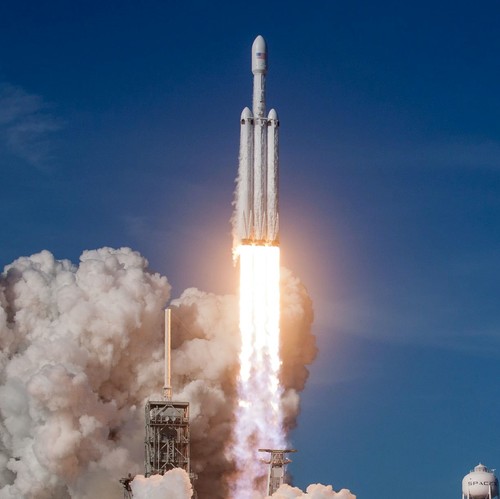
Starlink, SpaceX's budding satellite broadband service, will need to pick up the pace of satellite launches – and do so soon – if it's to have a chance of fulfilling its ambition to become a global provider of broadband services using a mesh of thousands of low-Earth orbit (LEO) satellites, surmises MoffettNathanson.
And the pace isn't just about getting those LEOs into orbit. It's also about getting enough of them into orbit fast enough to replace the ones that eventually fall out of orbit and burn up in the Earth's atmosphere.
Figure 1:  Musk's vision for Starlink hinges on Starship becoming a reliable launch vehicle for thousands of satellites, but industry analyst Craig Moffett wonders if even that will be enough.
Musk's vision for Starlink hinges on Starship becoming a reliable launch vehicle for thousands of satellites, but industry analyst Craig Moffett wonders if even that will be enough.
(Source: SpaceX)
Starlink's first mission of 2022 launched another 49 satellites into orbit, extending its grand total to nearly 2,000. But since completing its first orbital shell of about 1,600 satellites last May, "Starlink's launch frequency has slowed dramatically with only four rocket launches over the past seven months, or roughly one every seven weeks," Craig Moffett, analyst at MoffettNathanson, explained in the note, which was distributed to registered users via email.
Moffett also points out that the new Starlink V1.5 satellites are heavier, leading to fewer satellites per launch. He estimates that SpaceX would need to "drastically increase launch frequency to once every seven days for five consecutive years" just to have enough satellites in orbit for a planned constellation of 12,000 by its FCC deadline of 2027. But that won't be enough to replace the LEO satellites that fall out of orbit during that time.
"By the end of 2030, just nine years from now, they would have had to launch nearly 23,000 satellites in support of a 12,000 bird constellation," Moffett estimates. "This leaves no margin for error; likely impossible, given the launch schedule depends heavily on weather conditions."
That analysis is largely based on the ongoing use of the Falcon 9 rocket to deliver Starlink birds into orbit. Starlink hopes to beef up its capabilities with Starship, a larger launch vehicle that's had its share of troubles, with an orbital test flight that could take place as soon as March.
But Moffett argues that Starship isn't necessarily the answer to the problem, considering that new V2.0 satellites will be perhaps four times as massive as previous generation Starlink birds.
Starlink's satellite launch cadence challenge hasn't been lost on Elon Musk. In November 2021, he distributed a companywide email holding that a production crisis centered on the Starship engine puts SpaceX on a path to "genuine risk of bankruptcy if we cannot achieve a Starship flight rate of at least once every two weeks next year."
Noting that Musk's comment has largely been dismissed as hyperbole, Moffett also points out that Musk has conceded that a proposed 12,000-satellite constellation still won't be enough to deliver the required capacity, suggesting that a version 2 constellation might entail 30,000 satellites.
Figure 2:  Click here for a larger version of this image.
Click here for a larger version of this image.
Starlink's 'forever' problem
"Even using Starship, at 100 satellites per launch, achieving a 30,000-bird constellation and sustaining it through, say, 2030, would require launching fifty thousand satellites, or five hundred rockets, between now and then," Moffett estimates. "That's a rocket launch roughly every six days... for nine years. Simply maintaining the constellation thereafter, if one assumes 20% annual attrition (de-orbiting), would require a new launch every six days. Forever."
Moffett writes that launch frequency is just part of it. SpaceX, he explains, will also need to beef up manufacturing capacity and manage tricky supply chain logistics to pull off the needs for Starlink as well as SpaceX's clients.
Based on $30 million per launch, Moffett estimates that it would cost about $15 billion to build a constellation of 30,000 satellites, with satellite replacement (production and launch) alone costing more than $3.6 billion per year.
Though SpaceX was recently valued at over $100 billion, Moffett is concerned that investors have yet to "come to grips with all of the implications" of the audaciousness of the company's ambitions.
Related posts:
— Jeff Baumgartner, Senior Editor, Light Reading
About the Author(s)
You May Also Like












